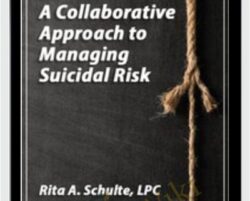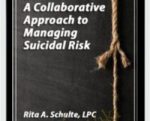With 71 percent of therapists reporting at least one client whose attempted suicide, helping people teetering on the precarious edge of suicidal ideation is one of the most important and scariest aspects of our work. This recording will give you a comprehensive road map for navigating assessment, treatment, and management for those at risk for suicide, as well as how to nurture a survivor’s potential for healing and resilience.Assess current statistics on suicide and identify signs and symptoms that indicate suicidal ideation. Analyze the CAMS Model for suicidality as it relates to clinical practice.Apply DBT, CBT, and other interventions to help clients emotionally regulate. Determine the clinical implications of specific strategies that foster adaptation and resiliency, including somatic resourcing, remembered resources, art, writing, and mindfulness. Differentiate common emotional and spiritual issues that survivors of complex trauma face, and discuss evidence-based strategies to help them rediscover personal strengths and the resiliency to move forward. Piercing the Darkness: Assessment, Treatment, and Management of Suicide Risk Explore current statistics on suicide and identify signs and symptoms that indicate suicidal ideation Drawing from news and media clips, see how suicide is on the rise for not only the elderly but for the nation’s youth Become aware of the current statistics on suicide Identify warning signs Identify environmental factors as well as genetic predispositions Understand how stigma affects clients Explore the 3 Areas of Impact Vulnerability for Suicide Traumatized Brain: The neurobiology of the traumatized brain How to Calm the Overactive Brain of your Client Affect Regulation skills Breathing Mindfulness techniques and the Art of Noticing Grounding techniques Guilt/Shame: Meaning making—Can they make sense of their story? Can they find bigger plan or purpose? How does shame affect the way the client lives? In what story is the client living? What conclusions has client drawn about the self? Existential Shattering: Crisis of belief Explore the concept of Alongside Cultivate social engagement and connection Using Story and Metaphor (Narrative Therapy) Learn how to use Presence, Patience and Planting Seeds Explore DBT, CBT and other interventions to help clients emotionally regulate Mindfulness: being self -aware and learning to exhibit impulse control Distress Tolerance: Learning to handle stressful emotions Emotional Regulation CBT—use Dysfunctional Thought Record/Beck Depression Inventory/Assess Client self-talk Identify irrational beliefs 5 R’s Recognize/Refute/Reframe/Reflect/Rewire Explore the CAMS Model for suicidality Explore the 5 stages of the CAMS model for treating suicidality Be able to identify primary and secondary suicide drivers Help clients enlarge their world with the PIE of life Learn tools to help clients become more resilient Explore the concept of resiliency Learn 3 keys to Self-Compassion Explore a list of specific strategies that foster adaptation and resiliency, including somatic resourcing, remembered resources, art, writing and mindfulness Self-Compassion Art therapy Journaling Somatic Resourcing Remembered Resource Alternate Nostril Breathing Jar of Grief Phototherapy Get A Collaborative Approach to Managing Suicidal Risk – Rita Schulte, Only Price $47Tag: A Collaborative Approach to Managing Suicidal Risk – Rita Schulte Review. A Collaborative Approach to Managing Suicidal Risk – Rita Schulte download. A Collaborative Approach to Managing Suicidal Risk – Rita Schulte discount.
 Inner Circle – Periodization for Strength Training and Rehabilitation – Mike Reinold
₹3,967.40
Inner Circle – Periodization for Strength Training and Rehabilitation – Mike Reinold
₹3,967.40
 Attraction Installed System _ Jason Capital
₹5,146.00
Attraction Installed System _ Jason Capital
₹5,146.00
A Collaborative Approach to Managing Suicidal Risk – Rita Schulte
₹7,138.00




